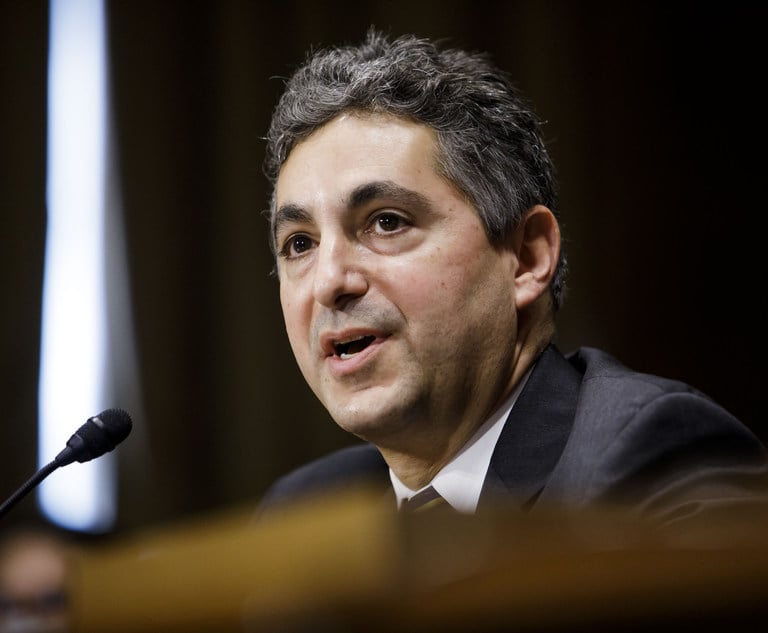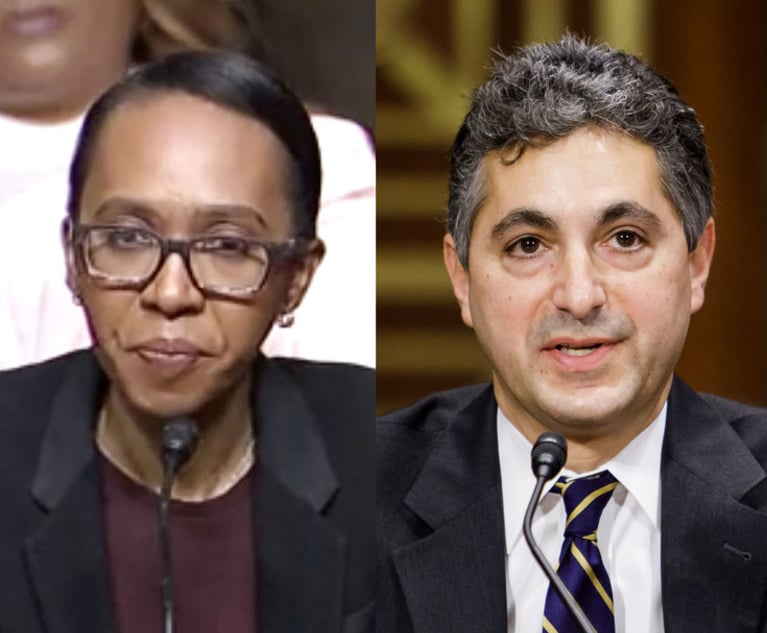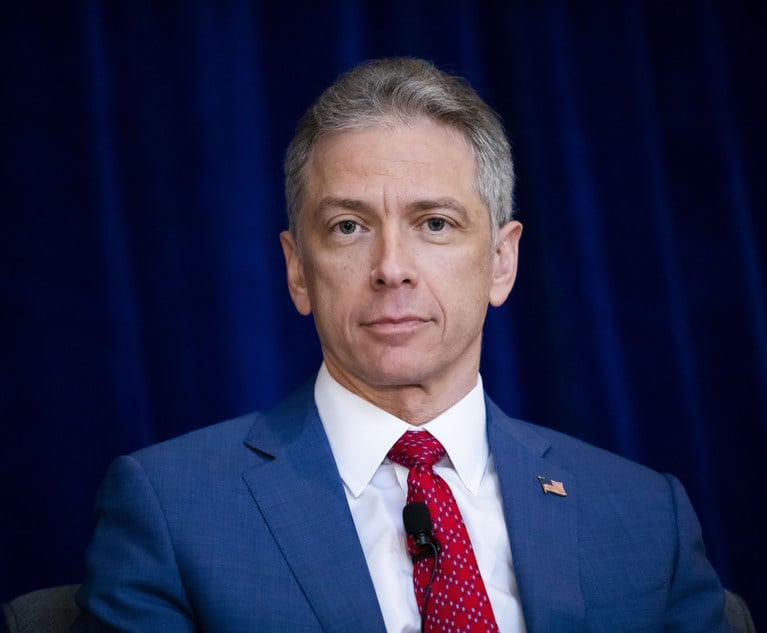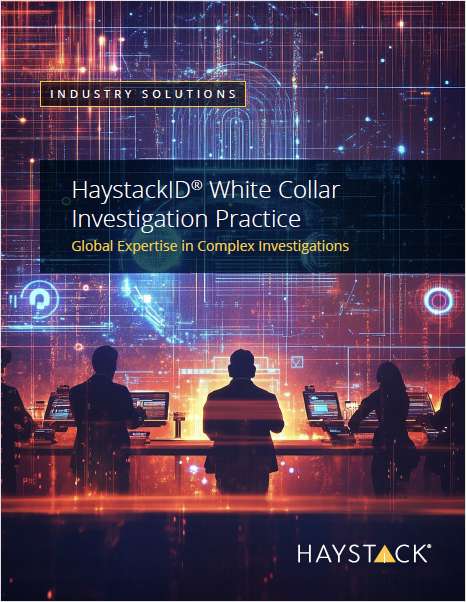Skilled in the Art: Pharma Patents: The Good, the Bad, and the Vaguely Familiar + FTC Cracks on DOJ
Three pharma patent bombs exploded this week, and we have a look at the law firms on the front lines.
May 14, 2019 at 09:30 PM
10 minute read
Welcome to Skilled in the Art. I'm Law.com IP reporter Scott Graham. I sat down at my desk this morning and three pharma patent bombs exploded. And I'm not even talking about what's going on in Congress. Let's get right to the news and a rundown of which law firms are on the firing line. Plus I have a quick look back at the FTC's brief but epic response to DOJ antitrust's attempt to insert itself in the Qualcomm litigation. As always you can email me your own thoughts and follow me on Twitter.
 |
|Perkins Wins the Zytiga War
Why did they even make this argument?
I often find myself thinking that while reading patent cases. Sometimes it's a small inventor whose patent would have been worth millions pre-Alice, but who is now waging an obviously hopeless battle for eligibility. But just as often lately, it seems to be a pharma company seeking to exclude competitors for just a few more years, or even months.
Today's example comes courtesy of the Federal Circuit in BTG International v. Amneal Pharmaceuticals. BTG and Janssen Biotech hold interests in U.S. Patent 8,822,438. It claims “a method for the treatment of a prostate cancer in a human comprising administering to said human a therapeutically effective amount of abiraterone acetate or a pharmaceutically acceptable salt thereof and a therapeutically effective amount of prednisone.”
Janssen, which is owned by Johnson & Johnson, markets abiraterone acetate under the brand name Zytiga. It describes the drug as a breakthrough treatment for patients with advanced prostate cancer that isn't responding to other drugs. Zytiga rang up sales of roughly $3 billion a year as recently as 2017.
Mylan Pharmaceuticals and other generics began seeking approval for their own versions a few years ago and the companies wound up battling in court and at the Patent Trial and Appeal Board. The generics won in each forum. The problem for Janssen is several previously published studies of related treatments for prostate cancer: one that featured abiraterone combined with hydrocortisone; one that combined ketoconazole with prednisone; and one featuring prednisone on its own.
Given that history, the PTAB and U.S. District Judge Kevin McNulty found it was pretty darn obvious to combine abiraterone with prednisone.
That didn't stop Janssen from making one last stand at the Federal Circuit. The company argued that the PTAB and McNulty both misconstrued the patent claims, which Janssen says require that both abiraterone and prednisone “treat” cancer, whereas in the prior art prednisone is used as a mere palliative to reduce side effects of the anti-cancer agent. “The invention is not merely the administration of abiraterone; it is a particular combination in which abiraterone and prednisone both have a specific anti-cancer effect,” Janssen argued.
Seems pretty strained to me, but in any event the Federal Circuit found the PTAB correctly construed the claims. The '438's specification “states that a 'therapeutic agent' may be either 'an anti-cancer agent or a steroid,'” Judge Evan Wallach wrote. “Because the specification explains that prednisone is an anti-cancer agent and a steroid … 'treating' with prednisone must logically include more than just anti-cancer effects and should include the long-familiar steroid effects of palliation and reduction of side effects.”
The led the court to uphold the PTAB's finding of obviousness and dismiss as moot two related IPRs and the district court case. The Federal Circuit had already dissolved a temporary injunction last fall, and Janssen's Zytiga revenues reportedly shrunk by half in Q1 due to generic competition.
It's a big win for former PTO Solicitor Nate Kelley, who now practices at Perkins Coie and who argued the appeal on behalf of some nine different generic defendants. Also representing the generics were Sterne Kessler Goldstein & Fox; Winston & Strawn; McNeely, Hare & War; and Crowell & Moring. Kelley's successor at the PTO, Thomas Krause, defended the judgment for the PTAB.
Sidley Austin partner Constantine Trela Jr. argued the appeal for Janssen.
 Ted Olson, of Gibson, Dunn & Crutcher. Credit: Diego M. Radzinschi / ALM
Ted Olson, of Gibson, Dunn & Crutcher. Credit: Diego M. Radzinschi / ALMGibson Tries to Block Blocking-Patent Rule
One of Janssen's arguments was that the runaway commercial success of Zytiga was a strong indicator that the '438 patent was not obvious. The PTAB had disagreed in part because Janssen and BTG allegedly held a blocking patent that prevented others from competing. Wallach ruled that substantial evidence supported that finding.
That reminds me that Acorda v. Roxane, the Federal Circuit decision articulating that theory of blocking patents, could result in one of the go-to pharma patent cases of Term 2019 at the U.S. Supreme Court. Gibson Dunn & Crutcher partner Ted Olson is counsel of record on Acorda's cert petition, and Allergan, PhRMA, BIO, IPO and the Boston Patent Law Association have already weighed in on its behalf.
Olson argues that the Federal Circuit has “manufactured a rigid, legally flawed doctrine” that has the effect of “dramatically lowering the bar for successful obviousness challenges. Perkins Coie is scheduled to respond on behalf of Mylan Pharmaceuticals on June 7.
|
Round 2: AIDS Activists Versus Gilead
A coalition of AIDS activists, unions and consumers filed a putative class action on Tuesday accusing Gilead Sciences of conspiring with other drug makers to inflate the prices of its life-saving HIV treatments. Name partners from Durie Tangri; Hagens Berman Sobol Shapiro; Hilliard & Shadowen; Radice Law Firm and Shepherd, Finkelman, Miller & Shah have signed onto the complaint.
“Gilead and its coconspirators have engaged in a long-running scheme to restrain competition with respect to some of the most important drugs used to treat Human Immunodeficiency Virus (“HIV”) infection,” states the complaint, which is signed by Durie partner Daralyn Durie.
On first blush, the complaint sounds like a highly publicized 2016 suit that accused Gilead of manipulating the patent system and engaging in anticompetitive practices with regard to some of the same drugs. That suit ultimately was dismissed by U.S. District Judge William Alsup on summary judgment, who said that “without more” the activists couldn't show anticompetitive behavior.
Tuesday's suit, Staley v. Gilead Sciences, appears to feature much greater factual detail and, as mentioned above, a more powerful array of legal talent.
|
AbbVie Washes Its Hands of Humira Litigation
Finally, AbbVie and its blockbuster drug Humira just keep on rolling. AbbVie on Tuesday settled its IP litigation with Boehringer Ingelheim. According to the BioPharma Dive website, Boehringer was the last biosimilar challenger standing.
As my ALM colleagues Jenna Greene and Tom McParland have reported, Boehringer and its Paul Hastings attorneys appeared to gain some leverage when U.S. Magistrate Judge Richard Lloret ordered AbbVie to produce documents responsive to Boehringer's unclean hands defense.
That leverage appears to have gained Boehringer a little, though not a lot. Boehringer announced that the AbbVie will let Boehringer launch its biosimilar, Cylzeto, in July 2023, subject to a royalty paid to AbbVie.
According to BioPharma Dive, that puts Boehringer ahead of previous settling defendants Novartis and Pfizer, which will launch later that year, but behind Amgen,who will launch six months earlier. “We are proud of the role we play in raising public awareness of biosimilars and being able to stimulate competition to bring more affordable treatment options to U.S. patients,” Sheila Denton, senior vice president and U.S. general counsel to Boehringer, said in a statement announcing the deal.
Paul Hastings' team included Bruce Wexler, Eric Dittmann, Isaac Ashkenazi, Young Park, Chad Peterman, Ashley Mays-Williams, and Nicholas Tymoczko. AbbVie's team included Wilmer Cutler Pickering Hale and Dorr; Latham & Watkins; Finnegan Henderson Farabow Garrett & Dunner; Pepper Hamilton; and McCarter & English.
|
In Response to Judge Alsup
Last week I wrote about U.S. District Judge William Alsup putting patent owners on blast for, in his opinion, trying to seal too much material in court proceedings.
Alsup said that patent holders “tend to demand in litigation a vastly bloated figure” in reasonable royalties compared to what they've earned in actual licenses, and that there's “a public need to police this litigation gimmick via more public access.” He refused Uniloc 2017's request to redact information about 109 licensees.
I noted at the time that patent owners and their lawyers would probably see things differently, and a reader of this briefing has provided a response that I think is worth publishing in the interest of equal time:
“It is a necessary economic truth that a licensor can't start a new negotiation at the place where it ended the last negotiation. Otherwise, the only effect is a consistent downward ratchet,” he writes. “In addition, a reasonable royalty is based on the assumptions of validity and infringement, i.e., full value for the infringement. A negotiated license is based on the assumption of some uncertainty and disagreement as to validity and infringement, and is thus always going to be a discount of the value of a reasonable royalty. So a negotiated license is not an upper bound on the value of a reasonable royalty in court; it is only a lower bound.”
 |
|I Know I Am, but How Anti-Competitive Are You?
Seldom has one cracked so hard in so few words.
That was my first reaction reading the Federal Trade Commission's two-page response to the Justice Department's attempt to insert itself in the FTC's antitrust case against Qualcomm.
Three months after U.S. District Judge Lucy Koh presided over a bench trial in the case, the Justice Department's antitrust division filed a statement of interest on May 12 asking Koh to allow additional briefing and hold a hearing on remedies if she finds Qualcomm violated antitrust laws. The remedies sought by the FTC—which include requiring Qualcomm to renegotiate all its modem chip licenses—have “the distinct potential to harm rather than help competition,” DOJ said in the statement signed by Principal Deputy Assistant AG Andrew Finch.
If you thought the FTC might not appreciate the Justice Department trying to kneecap part of its case, you're right. Thursday's response from lead trial attorney Jennifer Milici called the statement “untimely” and clarified the FTC “did not participate in or request this filing.” She helpfully cited U.S. District Judge Donovan Frank of Minnesota's refusal last year to consider a similar statement “in light of the Antitrust Division's unjustified delay.”
She went on to say that DOJ's submission “ignores this court's prior orders and the parties' briefing on remedy and misconstrues applicable law and the record.” Milici didn't spell it all out—because FTC is aware of Koh's concerns about “the voluminous existing briefing in this case.” But in a footnote she provided one-paragraph catalogue of all times the parties have already discussed remedies:
See ECF No. 997, at 10 (Dec. 13, 2018 Court order that “[t]he January 2019 trial will address both liability and remedy”); ECF No. 75 (April 19, 2017 scheduling order; no bifurcation of liability and remedy); Nov. 15, 2017 Hr'g Tr. at 4:21-5:3 (ECF No. 314) (Court rejecting Qualcomm bifurcation proposal); Oct. 24, 2018 Hr'g Tr. at 49:24-57:18 (ECF No. 916) (extensive discussion of remedy issues); ECF Nos. 928, 929, 932, 933 (party briefs on remedy evidence); ECF No. 966, at 66-67 (FTC proposed conclusions of law on remedy); ECF No. 967, at 139-151 (Qualcomm proposed conclusions of law on remedy); ECF No. 1051, at 24-25 (Qualcomm pre-trial brief); ECF No. 1053, at 21-22 (FTC pre-trial brief).
I'm sure looking forward to hearing what Judge Koh has to say about this.
That's all from Skilled in the Art today. I'll see you all again on Friday.
This content has been archived. It is available through our partners, LexisNexis® and Bloomberg Law.
To view this content, please continue to their sites.
Not a Lexis Subscriber?
Subscribe Now
Not a Bloomberg Law Subscriber?
Subscribe Now
NOT FOR REPRINT
© 2024 ALM Global, LLC, All Rights Reserved. Request academic re-use from www.copyright.com. All other uses, submit a request to [email protected]. For more information visit Asset & Logo Licensing.
You Might Like
View All
Skilled in the Art With Scott Graham: I'm So Glad We Had This Time Together

Design Patent Appeal Splinters Federal Circuit Panel + Susman Scores $163M Jury Verdict + Finnegan Protects Under Armour's House
Trending Stories
- 1Gibson Dunn Sued By Crypto Client After Lateral Hire Causes Conflict of Interest
- 2Trump's Solicitor General Expected to 'Flip' Prelogar's Positions at Supreme Court
- 3Pharmacy Lawyers See Promise in NY Regulator's Curbs on PBM Industry
- 4Outgoing USPTO Director Kathi Vidal: ‘We All Want the Country to Be in a Better Place’
- 5Supreme Court Will Review Constitutionality Of FCC's Universal Service Fund
Who Got The Work
Michael G. Bongiorno, Andrew Scott Dulberg and Elizabeth E. Driscoll from Wilmer Cutler Pickering Hale and Dorr have stepped in to represent Symbotic Inc., an A.I.-enabled technology platform that focuses on increasing supply chain efficiency, and other defendants in a pending shareholder derivative lawsuit. The case, filed Oct. 2 in Massachusetts District Court by the Brown Law Firm on behalf of Stephen Austen, accuses certain officers and directors of misleading investors in regard to Symbotic's potential for margin growth by failing to disclose that the company was not equipped to timely deploy its systems or manage expenses through project delays. The case, assigned to U.S. District Judge Nathaniel M. Gorton, is 1:24-cv-12522, Austen v. Cohen et al.
Who Got The Work
Edmund Polubinski and Marie Killmond of Davis Polk & Wardwell have entered appearances for data platform software development company MongoDB and other defendants in a pending shareholder derivative lawsuit. The action, filed Oct. 7 in New York Southern District Court by the Brown Law Firm, accuses the company's directors and/or officers of falsely expressing confidence in the company’s restructuring of its sales incentive plan and downplaying the severity of decreases in its upfront commitments. The case is 1:24-cv-07594, Roy v. Ittycheria et al.
Who Got The Work
Amy O. Bruchs and Kurt F. Ellison of Michael Best & Friedrich have entered appearances for Epic Systems Corp. in a pending employment discrimination lawsuit. The suit was filed Sept. 7 in Wisconsin Western District Court by Levine Eisberner LLC and Siri & Glimstad on behalf of a project manager who claims that he was wrongfully terminated after applying for a religious exemption to the defendant's COVID-19 vaccine mandate. The case, assigned to U.S. Magistrate Judge Anita Marie Boor, is 3:24-cv-00630, Secker, Nathan v. Epic Systems Corporation.
Who Got The Work
David X. Sullivan, Thomas J. Finn and Gregory A. Hall from McCarter & English have entered appearances for Sunrun Installation Services in a pending civil rights lawsuit. The complaint was filed Sept. 4 in Connecticut District Court by attorney Robert M. Berke on behalf of former employee George Edward Steins, who was arrested and charged with employing an unregistered home improvement salesperson. The complaint alleges that had Sunrun informed the Connecticut Department of Consumer Protection that the plaintiff's employment had ended in 2017 and that he no longer held Sunrun's home improvement contractor license, he would not have been hit with charges, which were dismissed in May 2024. The case, assigned to U.S. District Judge Jeffrey A. Meyer, is 3:24-cv-01423, Steins v. Sunrun, Inc. et al.
Who Got The Work
Greenberg Traurig shareholder Joshua L. Raskin has entered an appearance for boohoo.com UK Ltd. in a pending patent infringement lawsuit. The suit, filed Sept. 3 in Texas Eastern District Court by Rozier Hardt McDonough on behalf of Alto Dynamics, asserts five patents related to an online shopping platform. The case, assigned to U.S. District Judge Rodney Gilstrap, is 2:24-cv-00719, Alto Dynamics, LLC v. boohoo.com UK Limited.
Featured Firms
Law Offices of Gary Martin Hays & Associates, P.C.
(470) 294-1674
Law Offices of Mark E. Salomone
(857) 444-6468
Smith & Hassler
(713) 739-1250










